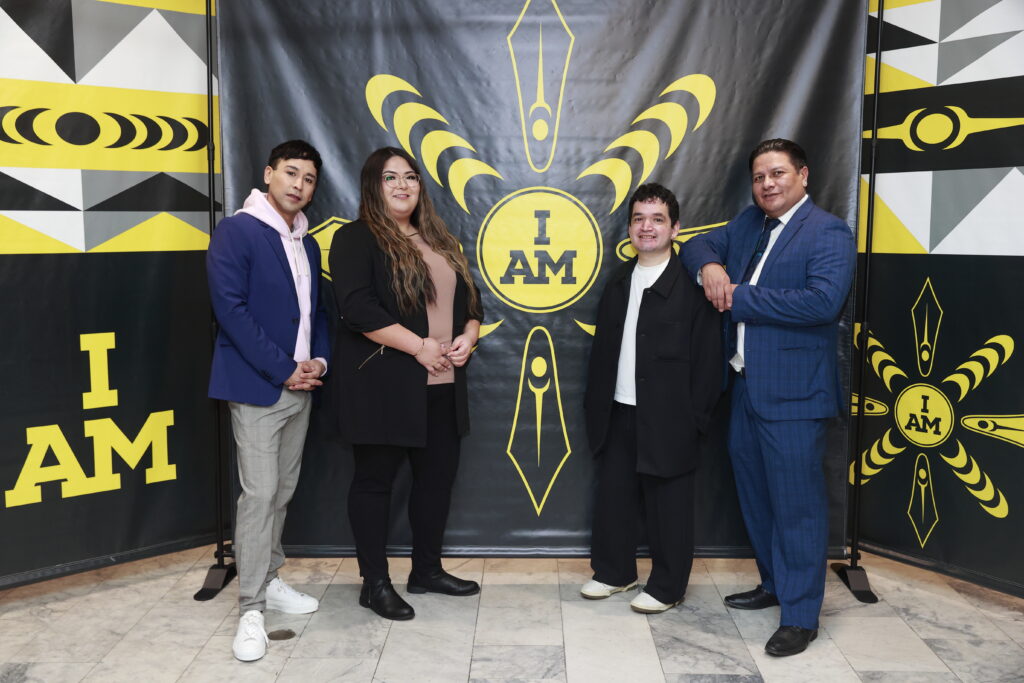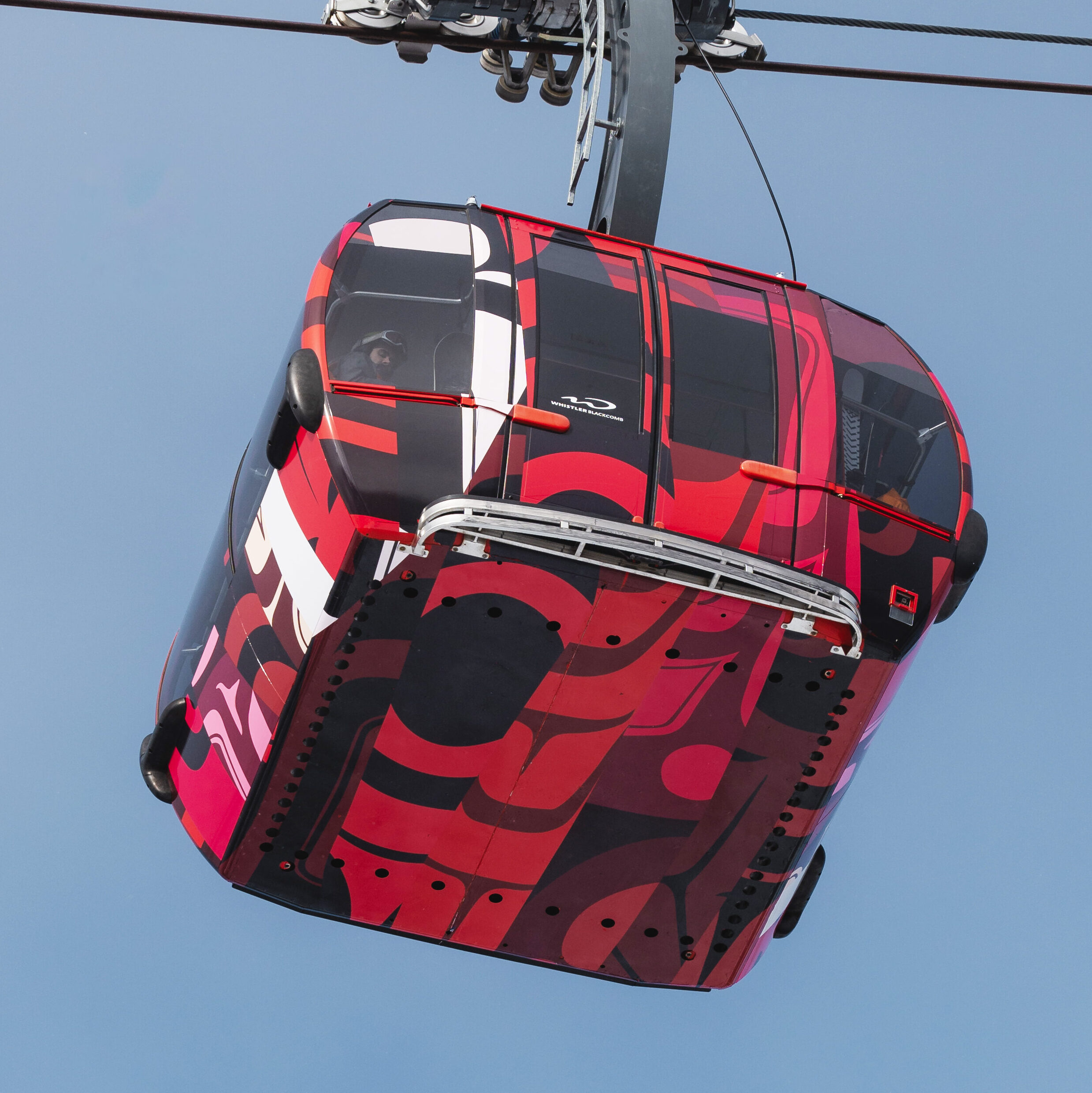How the Indigenous painter’s spiritual connection to the land inspired two legacy art projects in British Columbia
By Wendy Helfenbaum
Levi Nelson, an Indigenous artist from the Lil’wat Nation, is having a moment. In March, his bold painting, RED, was wrapped around a Whistler Blackcomb gondola to launch Vail Resorts’ Gondola Gallery by Epic, a program and film series that amplifies diversity in skiing and snowboarding. Nelson, along with three other Indigenous artists—Mack Paul of Musqueam Nation, Ray Natraoro of Squamish Nation and Olivia George of Tsleil-Waututh Nation—also created the visual identity for the 2025 Invictus Games in Vancouver and Whistler.
WE SPOKE WITH NELSON ABOUT THE INSPIRATION AND PURPOSE IN HIS WORK.
In the Gondola Gallery by Epic film, you contrast your ancestors’ trapping to survive the winters with your generation’s privilege to enjoy mountain recreation. How does being outdoors feed your creativity?
I feel completely alive when I’m in nature here in Whistler—my traditional territory and forever home. I learned to ski and snowboard on Whistler and Blackcomb mountains as a kid. Participating in mountain sports has translated to my creative process via the space it frees up in my mind. There’s a certain amount of creativity and grace that comes with skiing down a slope or speeding downhill on a mountain bike. Like good painting, it requires focus and freedom—a balance between a split decision and gut instinct. Being in the zone of feeling yourself work and thinking intelligently in the moment is rewarding.
Succeeding as an artist can also lift up your community, your culture and your history. How do you weave this sense of purpose into your work?
If I can give voice to my generation through my work, or if the art I create is seen as having an impact or statement, there’s a certain responsibility inherent in that. I like to paint, the paintings become art, and art becomes the fabric of culture and even a reflection of the period we’re living in. The image of Indigenous people has long been curated in museums by non-Indigenous people. Adding my contemporary perspective of what it means to be Indigenous today is important and I hope it can be seen in the work.

Photo: Jeff Vinnick
The visual branding for the Winter Invictus Games is the first time artists from each of the Four Host First Nations came together to design art for a major sporting event. Take us through the inspiration for the imagery and symbolism of the colours.
I worked with the other three talented artists on this project while I was finishing my MFA at Columbia University in New York. We met over a Zoom call and started on a brainstorm of sketches on a large piece of paper, while they sat in an office building in Vancouver. We thought about past iterations of the Invictus branding—the tulip, the ribbon, a river—and what commonalities our different Nations have. We are people of the Canoe and the war paddle became the central symbolic figure in which to speak about healing the warrior spirit.
When I first saw the tulip from a previous Invictus Games brand, I thought about paddles in the shape of a flower and the different meanings that could be derived from that: plant medicine for healing and paddles for working together. Black, yellow, grey and white are Invictus colours, which fill the remaining symbols within the brand. The triangular patterns come from our traditional blanket designs. The crescent can be found in wood carvings, and the Ancestral Eye comes from the old ones, who watch over all of us.
What do these two projects mean to you? What kind of legacy do you hope these works will leave?
Being asked to design the branding for the Invictus Games and for the Epic Gondola Gallery has been a huge honour. Both organizations are operating on Lil’wat Territory; it’s only fitting for a hometown boy to be a participant in the way things look around here. Being part of what Invictus stands for has meant so much to me. My late uncles fought in the World Wars, and I honour our heroes and believe in Prince Harry’s vision. I hope the legacy is a visual my fellow Indigenous people can see themselves in, because we see ourselves in nature. It’s nice to also see ourselves celebrated and represented in society in a positive way. The design is real, it is contemporary, it is Coast Salish.
Published October 2024





